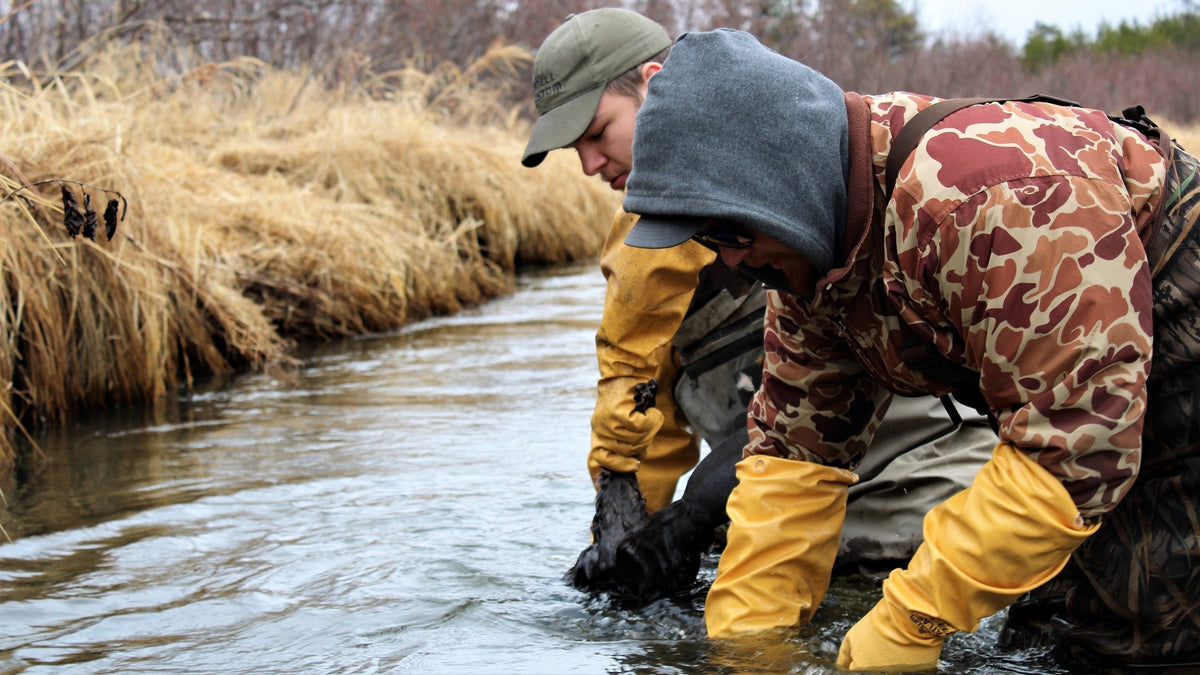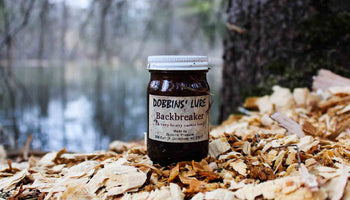

Table of contents
Intro to Drowning Systems
When running a water line, drowning systems are one of the most important pieces of equipment to have with and can be very beneficial to use. The first benefit of running drowning rigs on your traps is that they get your catch out of view of the public which reduces the chances of people stealing your traps and animal. There is nothing worse than walking up to a set and it’s very plain that a thief has walked off with both the trap and the animal that was waiting in it.
Another benefit, and in my eyes, the most important one, is that in some states the regulations allow you to skip a day or two between checking your drowning system if the set is lethal. For instance, at the time of this writing, Minnesota allows a lethal set to be checked every third day instead of the normal twenty-four check law for nonlethal traps. Extended checks allows the water trapper to either run more traps on multiple lines, move traps to new areas, or to be able to skip a day and get caught up on skinning in the fur shed.
With the animal already dead there is no need to dispatch the animal which will speed up checking your traps and allow you to check a location without the noise of firing a gun. The faster and quieter you are at a check location the better, especially during hunting season when people are in the woods and don’t want every deer in the township running around spooked.
One thing I find useful when running drowners and being able to stretch out check times is that I can base my checks on how productive my line is. Generally, when water trapping your first couple checks are going to be the most productive, whereas the longer the line has been out the lower your catch rate will be. If I’m running a river trapline a lot of times I will check my traps as follows:
- One day check
- One day check
- Two day check
- Two day check and pull.

4 Types of Drowning Systems
There are four main drowning system options you can use, but they all work on the same basic concept:
1. Wire
● The cheapest option for a drowning system.
● Works well for muskrat, mink, and raccoon.
2. CABLE
● A good economical choice for almost every furbearer you’ll target.
● Lasts longer than wire, but will eventually need replacing due to kinking.
3. REBAR
● Primarily used for beaver trapping.
● Long-lasting and economical.
● The main downside is its weight.
4. FibreGlass Rods
● The most expensive system.
● Typically eight or ten feet long, ½" diameter rods, used for beaver trapping.
● When paired with the Hagz setup, they’re far superior to rebar because they’re lighter and flex without bending.
There are also a few different locks on the market depending on which type of drowning system you’re using.
Important: Keep in mind that traps on drowners are lethal and should not be used at all locations. If you see a dog at the farmstead next to the bridge you’re trapping, it’s in everyone’s best interest to skip that spot or use a safe but lethal option like a bottom edge set. Running dog proofs on drowners can also be a good alternative in situations like these.




